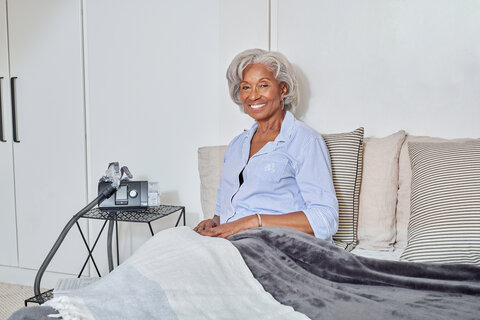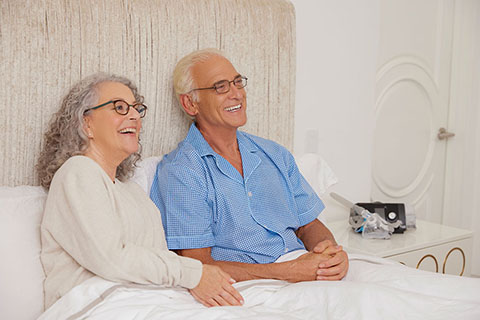It is essential to understand how to use your CPAP machine to its full potential in order to make the most of your treatment, remain compliant, and improve your health care related quality of life. Explore typical issues associated with using a CPAP device and learn CPAP machine troubleshooting methods to resolve problems that may arise.
My snoring has not improved
If you are struggling to breathe and continue to snore while asleep despite using your device, it is likely that your pressure setting is not correct. CPAPs provide constant airflow to keep your airways open and prevent the tissue vibrations that cause snoring. Immediately consult your practitioner if you are still snoring, gasping, or struggling to breathe at night so they can adjust the pressure of your device.
My CPAP device is uncomfortable
One of the most common issues CPAP users encounter is general discomfort. Typical issues include chafing from the mask, erratic breathing due to incorrect pressure, or chapped lips from forced air. The best way to overcome CPAP discomfort is to allow an adjustment period during waking hours. If the mask bothers you, wear it around the house while cleaning or watching TV to grow more accustomed to the fit. Or, if the air pressure is uncomfortable, talk to your practitioner about other pressure options.
My CPAP is causing painful bloating
If you wake up feeling bloated or with stomach cramps, you could be suffering from aerophagia. This condition, a common side effect of using a CPAP machine, occurs when you swallow too much air during sleep. Aerophagia often eases as your body adapts to using the device. If the condition persists, speak with your practitioner about alternatives such as a bilevel device. Where CPAP uses single pressure, bilevel offers both inhale and exhale pressure. When you inhale, the machine delivers more air pressure, and when you exhale, the air pressure gets reduced.
I am struggling to breathe
If you are not accustomed to using a CPAP device, having air forced into your lungs can feel unnatural at first. Fortunately, most CPAP devices come equipped with a "ramp" setting that starts with low air pressure and gradually increases while you sleep. This is an excellent option if you have difficulty breathing normally during treatment, as it lets you get comfortable and fall asleep naturally. Also, be sure to put your mask on before turning the machine on so you can adjust to the pressure as it begins.
My face and nose are irritated
First, check that you are not wearing your mask too tightly. Loosen the straps a bit, but make sure there is still a proper seal. Other common side effects are a sore throat and dry nasal passages. Many CPAP devices feature a humidifier attachment, which allows warm, moist air to flow through your airways throughout the night. If your machine does not have this capability, ask your practitioner about upgrading to one that includes a humidifier.
Contact Lincare with questions
By partnering with Lincare, you'll have 24/7 access to a team of sleep experts ready to help you make the most of your CPAP treatment. If you use a device through Lincare, we can access your machine's sleep data. That allows us to quickly make real-time recommendations to improve your sleep while helping you breathe easier.


